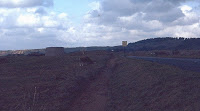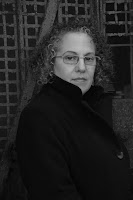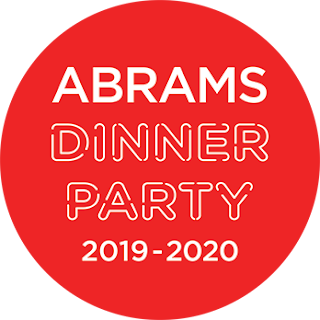 Welcome to the Literary Road Trip and my Spotlight On . . . Kate Ledger. You have heard me talk about Kate before because her book, Remedies, was published as an Amy Einhorn Book, an imprint that I strongly recommend to my readers.
Welcome to the Literary Road Trip and my Spotlight On . . . Kate Ledger. You have heard me talk about Kate before because her book, Remedies, was published as an Amy Einhorn Book, an imprint that I strongly recommend to my readers.
Since I first featured Remedies, the novel has gone on to be an August 2010 Indie Next Pick, a book club selection for Self magazine, and the community read for the Twin Cities Jewish Book Fair.
Kate is a Pennsylvania author through and through. She was born and bred in the Philadelphia area, and the city not only plays a role in her novel but has the power to seduce her into taking a walk on the wild side.
Bringing It All Back Home
I was born in Philadelphia, and I lived there until I was almost twenty-two. I still come back to visit, but I haven’t called Philly home for nearly twenty years. The truth is, however, the places you live leave their marks on you. They stamp you with their nuances and their vibes. And if it happens you’re a fiction writer, some of those marks creep up in surprising ways as they make appearances in your work.
 Remedies
Remedies takes place in Baltimore, where I was living at the time I began writing the book. But Philly is present in the story.
Remedies is the story of a complicated Baltimore family that’s on the brink of falling apart, but Philly appears as the city of escape, where reunions take place that put characters in touch with their pasts. It’s the site of confusion, of recognition. It’s the site of potential change, of falsified hope, and the desire to recreate one’s circumstances and identity.
I can explain how I envision the writing process, at least the process of writing fiction. You take a topic you’re interested in, and you begin to ruminate about it. There’s a great swirling of things you know and that you’ve experienced, of people and voices, some of which make sense and some of which appear only tangentially relevant. The visual description of it, in my mind, is Dorothy sitting in her house caught in the cyclone. She’s looking out the window and pieces of her life are floating by: Auntie Em in a rocking chair, a cow, some familiar people in a rowboat, Miss Gulch on the bicycle who then transforms into a witch. In the writing process, all swirling outside the window makes sense because it’s familiar, but the pieces are unmoored, and out of context.
The beauty of writing—of creating—is that moment of reaching out the window into the cyclone to grab what’s floating by. You’re telling a story, but the components come from both the conscious and the subconscious. The pieces don’t make sense, at least not in a linear, rational way. As

you write, and you fit some of these fragments together, you take note of some of the connections. Other connections you understand later, after the book is done. I heard a memoirist give a talk recently in which he said, “As you write about your life, you discover your stories.” The opposite seems to me to be true about fiction: As you write fiction, your stories discover you.
I wasn’t thinking consciously about Philly as I was writing; at least, I wasn’t thinking: Hmm, Philly, what does it mean to me? I put a character on an Amtrak train and let her get off at 30th Street Station. Ultimately, she has an affair in the city that makes her discover some truths about her life. In hindsight, long after I’d finished writing the book, I remembered one afternoon in my own life history—an afternoon on a Philly street—when I’d sought a kind of transformation. My own story was much more innocuous than my character’s, but similar in the themes of finding oneself.
It was the mid-1990s. I no longer lived in Philly, but had come back to visit my parents as a twenty-something. I had a job I was uncertain about. I was single and eager to fall in love. I was intent on becoming a fiction writer, but hadn’t yet begun to write a book. I was trying to figure out my life and who I was, what sorts of things represented me, and, in turn, how I represented the things I cared about. That same weekend I was in town, my brother, two years younger than I am, happened to be visiting, too. His life was in similar stage of taking shape. He told me he was thinking about getting a tattoo. What I’d been thinking about was getting my navel pierced.

During our teenage years, in the 1980s, South Street in Philadelphia had been on fire with alternative culture. For an eight-block stretch on the east side of downtown, punk fashion raged with dramatic style: leather chokers, studs, Mohawks, fishnets, high-top boots, dyed hair. As teenagers, my brother and I had been equally non-flamboyant in our style, but we’d often ventured to South Street to buy tapes and posters and to marvel at the boldness of punk style. But that particular weekend a decade or so later, as we returned to Philly, we were struck with the desire to recreate ourselves with symbols that still felt daring and alternative. We drove across town to South Street to stamp ourselves with something new.
The neighborhood was still much as we remembered it, a crowded avenue of colorful storefronts, and we found a few tattoo parlors where we looked through artists’ samples. They were intriguing, fanciful, and bold. The fact about a tattoo, though, is you have to know what message you want it to convey about you. I could see in my brother’s face that neither Tweetie Birds nor Chinese characters seemed to hold enough meaning. We wandered further down South Street and went into a store to ask about the price of navel piercing. But I, too, began to feel uncertainty about what exactly I was trying to say with the gesture.
After a while, having made no decisions, we headed to a rooftop lounge and ordered drinks. The street looked cartoonish from up above. We had a good time talking, and soon the afternoon sun was fading. We both acknowledged it was too bad we no longer both were living in the same city, especially both being twenty-

something, unsettled, and uncertain about what was coming next in our lives. It was clear as we sat there neither of us was getting tattooed or pierced that day. But it was also clear some other transformation had taken place. The afternoon had resulted in a kind of growing up—the kind you experience when you take note of where you are in your life, when you recognize you’re not alone in what you’re feeling, and when you realize that things, however they turn out, will probably be okay. We drank a few beers and went home.
Recently, I reminded my brother of that afternoon, and he grinned appreciatively about The Day We Went to South Street and Nothing Happened. Philly was where I experienced a lot of things. It was the city where my heart was first broken by a boyfriend. It was where I began writing about medicine, which became the focus of my career as a magazine writer. The city is symbolic of a multitude of things to me, but I discovered in the process of writing a work of fiction that self-discovery is among them. (It might be interesting to know that, for yet another character in the novel, navel-piercing figures prominently, too.)
_______
Thank you so much, Kate. I love the analogy of the debris flying by the windows in
The Wizard of Oz. I also love the story of your visit to South Street. I can picture you two taking a look at your options; playing with the idea of getting a little crazy; and then going somewhere to have a drink, catch up on your lives, and do some people watching. What a great memory.
(Photo credits: the ants on the old Zipperhead store and the mosaic from South Street by David Saddler; South Street buildings by Eric Hart. Click on the images to enlarge.)
Here is a short video in which Kate introduces us to Remedies:
 Kate Ledger grew up in Philadelphia and graduated from Akiba Hebrew Academy and the University of Pennsylvania. She received a Master of Fine Arts degree in fiction from the University of Arizona. She lives in St. Paul, MN, with her husband and children. To learn more about Kate, visit her website.
Remedies at an Indie
Remedies at Powell's
Remedies at Book Depository
Kate Ledger grew up in Philadelphia and graduated from Akiba Hebrew Academy and the University of Pennsylvania. She received a Master of Fine Arts degree in fiction from the University of Arizona. She lives in St. Paul, MN, with her husband and children. To learn more about Kate, visit her website.
Remedies at an Indie
Remedies at Powell's
Remedies at Book Depository
These links lead to affiliate programs.
Click for more
 Weekend Cooking is open to anyone who has any kind of food-related post to share: Book (novel, nonfiction) reviews, cookbook reviews, movie reviews, recipes, random thoughts, gadgets, fabulous quotations, photographs. If your post is even vaguely foodie, feel free to grab the button and link up anytime over the weekend. Please link to your specific post, not your blog's home page. For more information, see the welcome post.
Weekend Cooking is open to anyone who has any kind of food-related post to share: Book (novel, nonfiction) reviews, cookbook reviews, movie reviews, recipes, random thoughts, gadgets, fabulous quotations, photographs. If your post is even vaguely foodie, feel free to grab the button and link up anytime over the weekend. Please link to your specific post, not your blog's home page. For more information, see the welcome post. It's Halloween here at Beth Fish Reads and everywhere, especially at Jenn's of Jenn's Bookshelves, who has been hosting a month-long Halloween Fright Fest. I wanted to participate, but I don't really read horror. Instead I am going to frighten at least most of you with food.
It's Halloween here at Beth Fish Reads and everywhere, especially at Jenn's of Jenn's Bookshelves, who has been hosting a month-long Halloween Fright Fest. I wanted to participate, but I don't really read horror. Instead I am going to frighten at least most of you with food.
















































